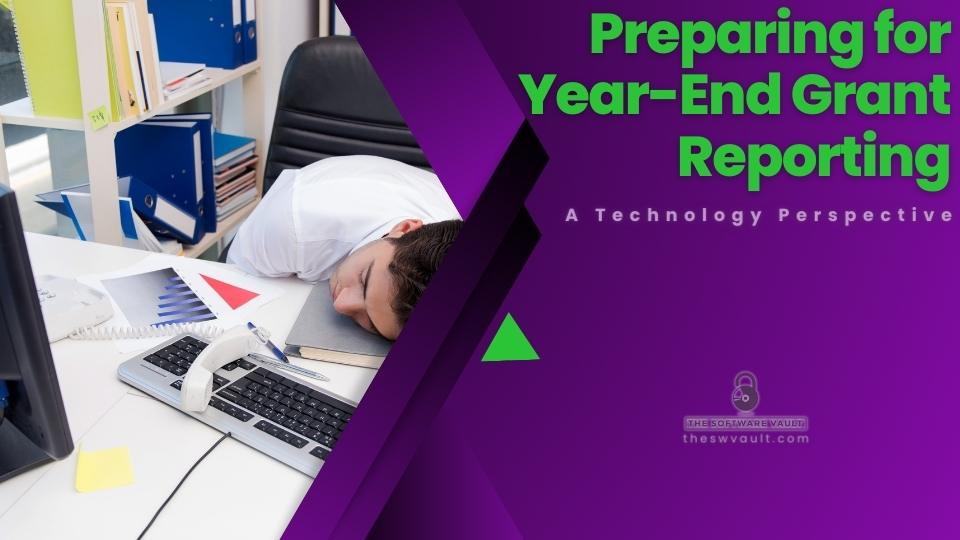A Technology Perspective
As 2023 comes to a close, it is that time for nonprofit organizations to prepare for year-end grant reporting. This crucial process ensures that all grant funding is accounted for and accurately reported. For nonprofit organizations, this can often become a painful and time-consuming process. One major pain point is the reliance on multiple spreadsheets to track different aspects of the organization’s work. In today’s digital age, it’s crucial for nonprofits to streamline their operations, and that includes finding ways to alleviate the burden of managing information scattered across various spreadsheets or disconnected systems. In this month’s newsletter, we will explore how organizations can prepare for year-end grant reporting from a technology perspective, highlighting 4 key tools and strategies to maximize efficiency and effectiveness.
1. Ensure Data Accuracy and Consistency
Accurate and consistent data is crucial for year-end grant reporting. Implementing data management systems and protocols helps maintain data integrity throughout the reporting process. Technology solutions such as Customer Relationship Management (CRM) systems or Cloud-Based Databases can ensure data accuracy, enable real-time updates, and facilitate seamless collaboration among team members responsible for reporting.
2. Automate Financial Reporting
Financial reporting is a critical aspect of year-end grant reporting. Leveraging financial management software or accounting systems can automate data aggregation, generate financial statements, and facilitate reconciliation processes. The majority of mainstream financial systems have a way to share data with other systems such as Cloud-Based Databases or Grant Management Software so that organizations can seamlessly and effortlessly extract financial data, saving time, removing data request bottlenecks, and ensuring accuracy in reporting financial outcomes.
3. Utilize Data Visualization Tools
Presenting grant impact and outcomes in a visually engaging manner is essential for effective reporting. Data visualization tools, such as dashboards and interactive charts, can transform complex data into clear and compelling visual representations. These tools not only enhance the understanding of grant outcomes but also make it easier for stakeholders to interpret and engage with the information presented.
4. Implement Document Management Systems
Document management is a crucial component of year-end grant reporting, as it involves organizing and storing various documents and files. Implementing document management systems or cloud-based storage solutions can help ensure secure storage, easy retrieval, and version control of important documents such as project plans, receipts, progress reports, and communications. This streamlines the reporting process and mitigates the risk of losing critical documentation.
In conclusion, technology plays a vital role in preparing organizations for year-end grant reporting. By ensuring data accuracy & consistency, automating financial reporting, utilizing data visualization tools, and implementing document management systems, organizations can streamline their reporting processes, save time, and improve overall efficiency.
As previously discussed, embracing technology empowers organizations to present accurate, impactful, and visually engaging grant reports, showcasing the successful utilization of grant funds and driving positive change in their communities. So, leverage the power of technology to prepare your organization for a seamless year-end grant reporting experience!If the suggested technology solutions are not in place for this year, don’t fret! There is always time to prepare for the following year. If assistance is needed, feel free to reach out to our team for a consultation!

